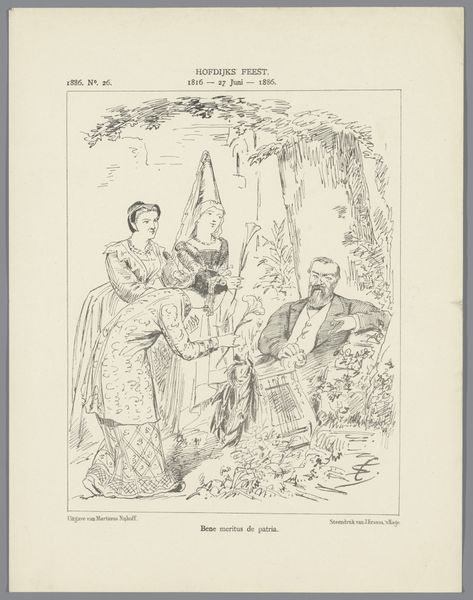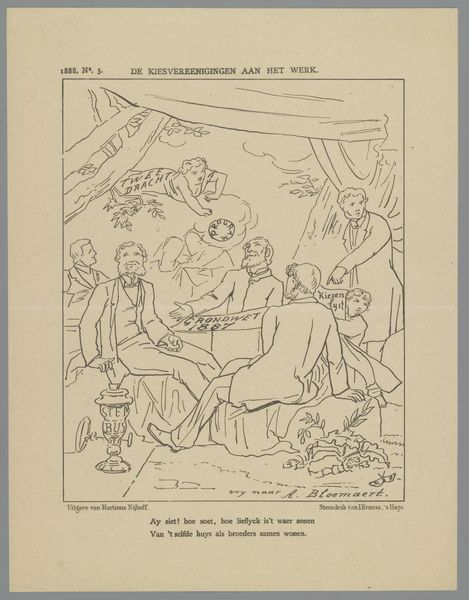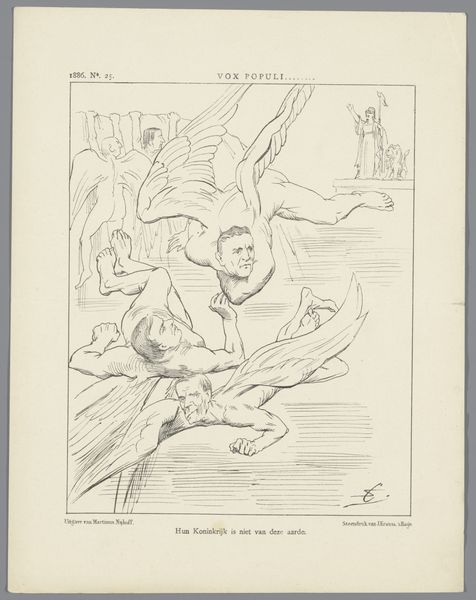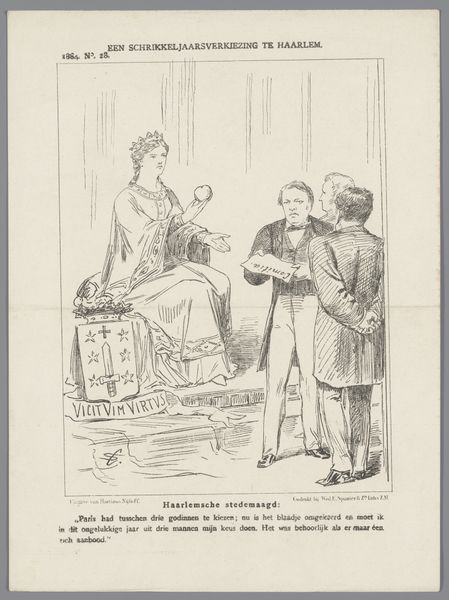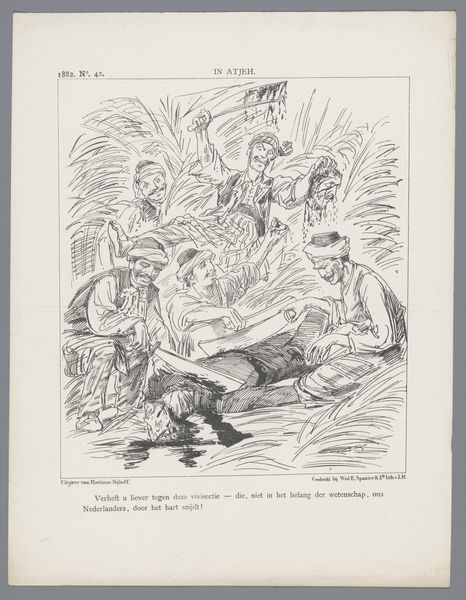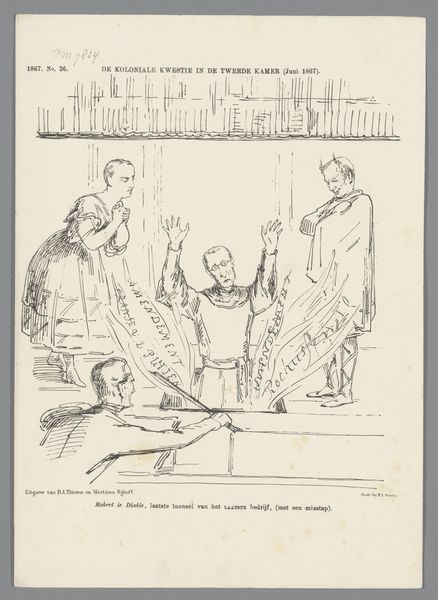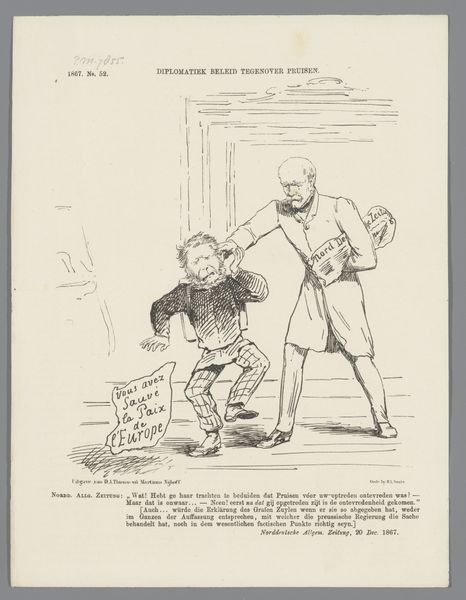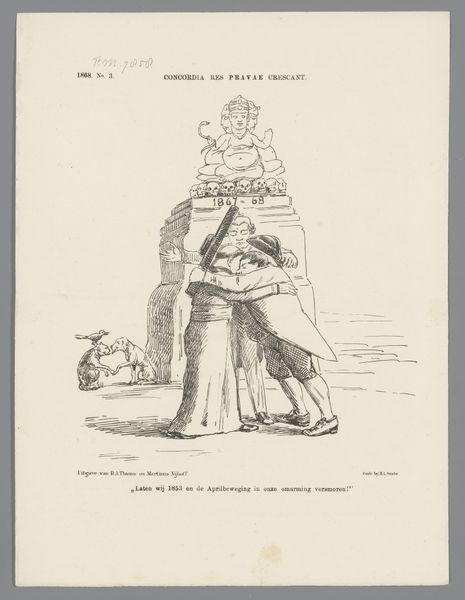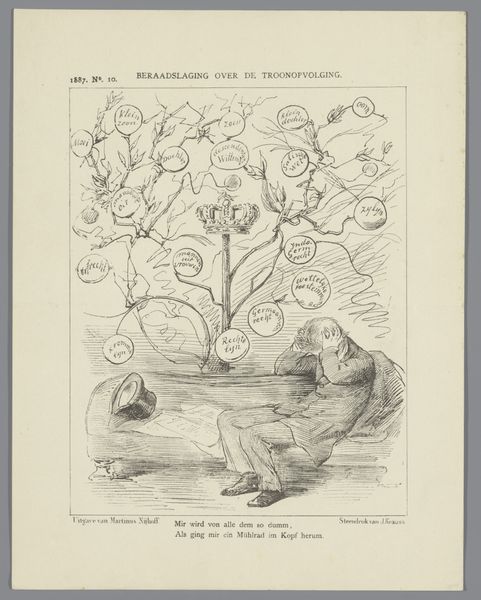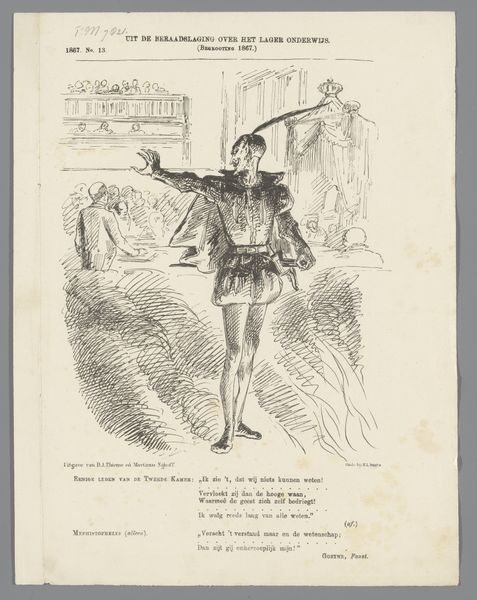
Spotprent met de minsters Fransen van de Putte en De Vries Azn., 1872 1872
0:00
0:00
drawing, pen
#
drawing
#
caricature
#
pen
Dimensions: height 275 mm, width 215 mm
Copyright: Rijks Museum: Open Domain
Curator: This striking caricature, created in 1872 by Johan Michaël Schmidt Crans, utilizes pen and ink on paper to capture a moment of political tension. It's titled "Spotprent met de minsters Fransen van de Putte en De Vries Azn." Editor: My first impression is one of subdued power and bureaucratic weariness. The figures are meticulously rendered, but the overall mood feels heavy. The use of monochrome amplifies that seriousness, don’t you think? Curator: Absolutely. Schmidt Crans clearly intends to convey the weight of governance. What we see are two ministers presenting documents to a seated female figure, likely representing the Dutch nation, judging by her classical garb. Below her lies a discarded lion, perhaps symbolizing the diminished strength or pride of the nation at this time. Editor: Yes, the lion is key here. It speaks to the disillusionment following political decisions, presenting the national image as wounded or weakened. The ministers presenting documents, almost as if appeasing her, indicates that political events are influencing how national power is perceived. The caricature, as a critical commentary, highlights a perceived failure of these policies. Curator: Exactly. The composition draws our attention to the power dynamics inherent in the Dutch government at this moment. The act of presenting a document implies a need to justify actions or policies, revealing underlying conflicts. The artist masterfully uses this imagery to criticize how the nation is being led. Editor: Moreover, the almost apologetic stances of the figures could be interpreted as an acknowledgment of wrongdoing, but more deeply speaks to historical patriarchal dynamics. I read the lion as symptomatic of the Dutch nation itself—incapable and inactive. How does that symbol function for its audience then? Curator: That's a compelling perspective, examining audience and reception of this political cartoon. We can interpret this critique of the Dutch nation and leadership within the context of social reforms and the shift of power from nobility to the people. Editor: Thinking of contemporary culture, there are important things at stake. We can investigate these historical representations, but equally, consider what happens if you’re outside the joke, or the historical event itself. Curator: Precisely. What endures here isn't just a record of a past conflict, but rather a prompt that can ignite social critique. This offers enduring relevance in an ever-shifting political scene.
Comments
No comments
Be the first to comment and join the conversation on the ultimate creative platform.
